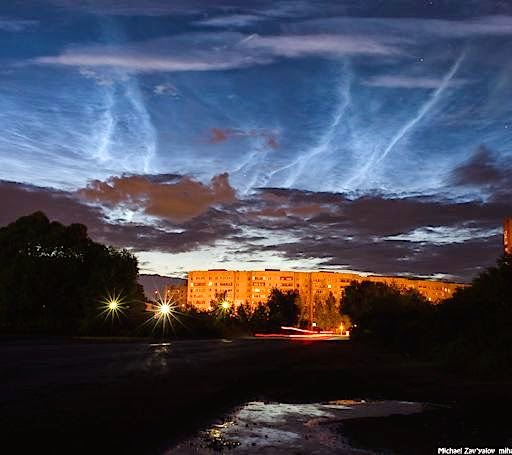This morning in Russia, the sunrise was electric-blue. Bright bands of noctilucent clouds zig-zagged like lightning across the twilight sky, continuing a two-day display that has delighted observers across northern Europe. Michael Zavyalov sends this picture taken July 8th from the city of Yaroslavl:
"Another night with bright noctilucent clouds (NLCs) in Yaroslavl!" says Zavyalov. "We could even see their reflection in the water."
NLCs are Earth's highest clouds. Seeded by "meteor smoke," they form at the edge of space 83 km above Earth's surface. When sunlight hits the tiny ice crystals that make up these clouds, they glow electric blue.
In the northern hemisphere, July is the best month to see them. NLCs appear during summer because that is when water molecules are wafted up from the lower atmosphere to mix with the meteor smoke. That is also, ironically, when the upper atmosphere is coldest, allowing the ice crystals of NLCs to form.
The natural habitat of noctilucent clouds is the Arctic Circle. In recent years, however, they have spread to lower latitudes with sightings as far south as Utah and Colorado.
This will likely happen in 2014 as well. Observing tips: Look west 30 to 60 minutes after sunset when the Sun has dipped 6o to 16o below the horizon. If you see blue-white tendrils zig-zagging across the sky, you may have spotted a noctilucent cloud.
Spaceweather
8 July 2014

0 件のコメント:
コメントを投稿